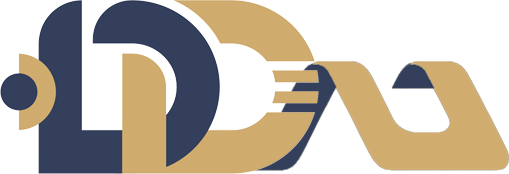Healthcare has always revolved around observation, diagnosis, and treatment, and among the most important diagnostic tools is the stethoscope. Over time, this device has evolved into what is known as a phonendoscope, designed to provide more accurate sound amplification for detecting internal body sounds. The shortened term, Fonendi, is closely associated with this evolution.
In today’s world, however, Fonendi is not limited to being just a medical instrument. It has also been embraced as a digital healthcare concept and brand identity for telemedicine platforms. From enhancing the traditional stethoscope to serving as a symbol of modern health technology, Fonendi bridges the past and the present of medical innovation.
This article explores the origins, medical relevance, digital applications, and future of Fonendi in great detail.
The Origin of Fonendi
The word Fonendi is derived from phonendoscope, which itself comes from Greek roots:
-
phōnē (voice or sound)
-
skopein (to examine or observe)
Historically, the phonendoscope was designed as an improvement over the traditional stethoscope. While René Laennec invented the first stethoscope in 1816, it was later modified by physicians who wanted greater sensitivity to sound. The phonendoscope, often considered a more refined version, allowed doctors to capture low-frequency and high-frequency sounds more precisely.
The term Fonendi today is used not only in reference to this medical instrument but also as the name of digital healthcare platforms that offer online consultations, health monitoring, and telemedicine services.
Fonendi in the Medical Field
A Core Diagnostic Instrument
The Fonendi (phonendoscope) has remained central in clinical practice for decades. It is a simple, portable, and effective tool for examining patients across a wide range of medical fields.
-
Cardiology: Detecting heart murmurs, valve abnormalities, irregular rhythms, and other cardiac issues.
-
Pulmonology: Assessing lung conditions such as asthma, pneumonia, bronchitis, and COPD (chronic obstructive pulmonary disease).
-
Pediatrics: Monitoring the delicate heart and lung sounds of infants and children.
-
General Medicine: Used in routine check-ups to evaluate overall health quickly.
Advancements in Fonendi Devices
Modern Fonendi stethoscopes are no longer just acoustic instruments. They now come equipped with:
-
Digital sound amplification for clearer diagnosis.
-
Noise reduction technology to minimize background sounds.
-
Bluetooth connectivity to transmit sounds to computers or smartphones.
-
Recording functions that allow playback for training or second opinions.
This shows how the traditional Fonendi has adapted to fit into the digital medical ecosystem.
Fonendi as a Digital Healthcare Platform
In recent years, Fonendi has also emerged as a telemedicine platform that redefines patient-doctor interaction. These platforms typically use the name “Fonendi” as a symbol of trust, precision, and medical advancement.
Features of Fonendi Digital Platforms
-
Remote Consultations: Patients can connect with doctors via video or audio calls.
-
Electronic Health Records (EHRs): Secure storage and easy sharing of patient records.
-
AI-Assisted Diagnosis: Algorithms that analyze symptoms and provide recommendations.
-
Accessibility: Healthcare services extended to rural and underserved populations.
-
Multi-Specialty Support: Access to general practitioners, specialists, and diagnostic services.
Benefits for Patients and Doctors
-
For Patients: Convenience, lower costs, and faster access to healthcare professionals.
-
For Doctors: Ability to expand their practice, access patient history digitally, and use smart diagnostic tools alongside virtual consultations.
Fonendi platforms showcase how digital health solutions are reshaping modern medicine.
Importance of Fonendi in Modern Healthcare
Bridging Tradition and Technology
One of the greatest strengths of Fonendi is its ability to bridge the traditional practice of auscultation with digital health innovation. Doctors still rely on stethoscopes, but digital Fonendi devices now allow those sounds to be shared across borders through telemedicine platforms.
Affordability and Accessibility
Compared to high-tech imaging machines like MRI or CT scans, Fonen-di devices are affordable, portable, and versatile. They can be used in hospitals, clinics, ambulances, and even in home care.
Training and Education
Medical students rely heavily on Fonendi instruments to learn auscultation skills. With digital upgrades, students can now listen to recorded sounds repeatedly and compare them with AI-assisted interpretations.
Public Health Applications
Fonendi devices and platforms are crucial in:
-
Mobile healthcare units serving remote areas.
-
Pandemic response efforts where in-person visits are limited.
-
Preventive health programs for early detection of heart or lung issues.
Challenges in the Adoption of Fonendi
While Fonen-di has strong potential, there are some challenges:
-
Digital Divide: Not all patients have access to smartphones or reliable internet for telemedicine services.
-
Cost of Advanced Devices: While traditional stethoscopes are affordable, digital Fonendi devices may be expensive for small clinics.
-
Training Requirements: Doctors and nurses need training to use advanced Fonen-di platforms effectively.
-
Data Security: Telemedicine platforms must ensure that patient data remains private and protected.
The Future of Fonendi
AI-Powered Auscultation
Artificial intelligence is already being integrated into Fonen-di devices. AI can analyze heart and lung sounds to detect abnormalities faster than the human ear.
Wearable Fonendi Devices
Imagine patients wearing a Fonen-di patch on their chest that monitors heart and lung activity continuously, sending data to doctors in real-time. This could revolutionize preventive medicine.
Cloud-Connected Healthcare
Future Fonendi platforms are likely to become fully cloud-connected, allowing global collaborations among doctors and specialists.
Virtual Medical Training
Digital Fonen-di devices will allow medical students to participate in simulation-based training using real patient recordings, enhancing education worldwide.
Final Thoughts
The story of Fonen-di reflects the journey of healthcare itself—from simple, analog beginnings to the complex, interconnected, and digital future. As a phonendoscope, Fonen-di remains a vital tool for listening to the body’s hidden sounds. As a telemedicine platform, Fonen-di represents innovation, accessibility, and the global push toward digital health.
In both forms, Fonen-di symbolizes precision, trust, and progress in the field of medicine. Its future lies in continuous adaptation, ensuring that healthcare becomes more inclusive, efficient, and technologically advanced for everyone.

